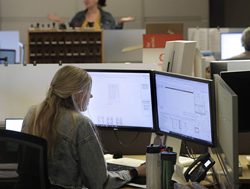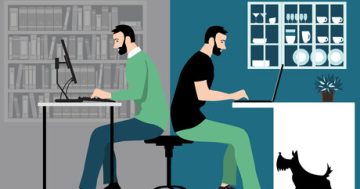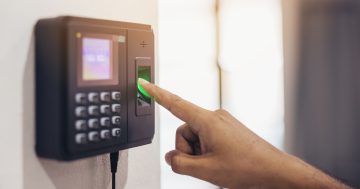
A survey has found that less than 10 per cent of workers want to be back in the office full-time, with many turning up for coffee and then leaving. Photo: NDTV.
Adam Scopp describes a new phenomenon in office work, which has grown as employees resist post-pandemic back-to-office mandates.
‘Coffee badging’ is yet another buzz phrase gaining currency amid the dense mix of office jargon. It describes a worker who briefly comes into the office, taps in with their identity badge, grabs a coffee and mingles with colleagues long enough to impress that they have been there before leaving to work the rest of the day from home.
A recent United States survey of 2000 full-time workers found that more than half admitted to coffee badging.
The trend seems to be rising in popularity in conjunction with the increased return-to-office mandates we are seeing.
As organisations require their employees to be back in the office for at least part of the week, employees seem to be revolting against this by poking their heads in for a quick coffee and then slipping back out again.
A huge reason for this is that many employees enjoy having hybrid and remote working privileges.
Another survey found that one-in-five workers dread working from an office, and less than one-in-10 want to be in an office every day. The survey even discovered that organisations that issued return-to-office mandates experienced no improvement in productivity, and 99 per cent saw a drop in their employees’ overall job satisfaction.
The tug-of-war between employers who want their employees in the office and employees who want to work from home has continued since the pandemic lockdown ended.
While some solutions are being trialled — everyone coming into the office on the same day, a four-day working week entirely onsite — we are not seeing any that seem to stick.
What employers need to do is reverse engineer the problem to find the solution.
Many workers are dissatisfied with coming to the office because they can do all the work they do there just as easily from home (except that at home, they can save money on travel, work more comfortably, and lessen commuting time).
It’s no wonder many of them don’t want to come into the office—there is not a clear incentive to do so. Organisations need to focus their efforts on this. Demanding employees return to the office without a real reason insinuates a lack of trust in them.
Instead, employers must consider the fact that the role of the office has evolved in the modern working world. Therefore, they should focus on optimising the areas of onsite work that cannot be replicated at home. The most obvious one is face-to-face collaboration. It can be creatively stifling to attempt to exchange ideas over a Zoom call, but in a meeting room, you can bounce
them off each other.
In this sense, the office has taken on the role of an ‘ideas hub’ whose purpose is to encourage cohesion and the exchange of innovative ideas, all the while strengthening the interpersonal bonds between colleagues and leaders.
Efforts need to be made now to optimise organisations’ effectiveness in hybrid working; otherwise, coffee badging will only spread.
Adam Scopp is the Editorial Assistant at OrgShakers, charged with capturing the team’s latest thought leadership in a way that creates compelling and inspiring content. This article first appeared on the OrgShakers website.










